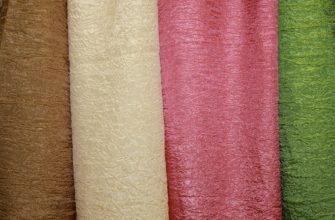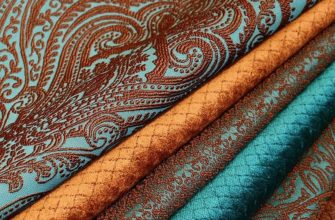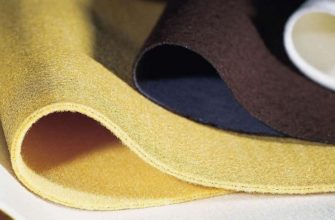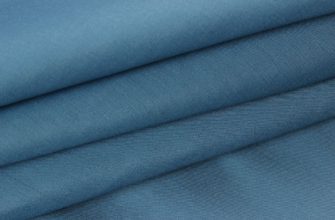The traditional checked fabric is tartan, which symbolizes elegance with a dose of conservatism. It has a recognizable feature in the form of a checkered weave of threads of different colors. Tartan is another name for tartan. Kilts or Scottish men's skirts were made from this dense material. Both names indicate the homeland of the fabric and the age of the origin of the material.
History and varieties
More than 2 thousand years ago, the inhabitants of Scotland came up with a way to make practical and warm clothing material from dyed threads. Craftsmen from each region came up with their own special pattern and thread color for the fabric. Therefore, the coloring and pattern of tartan fabric served as a kind of passport for its owner. They determined the place of birth, belonging to a specific clan, and the social status of a person.
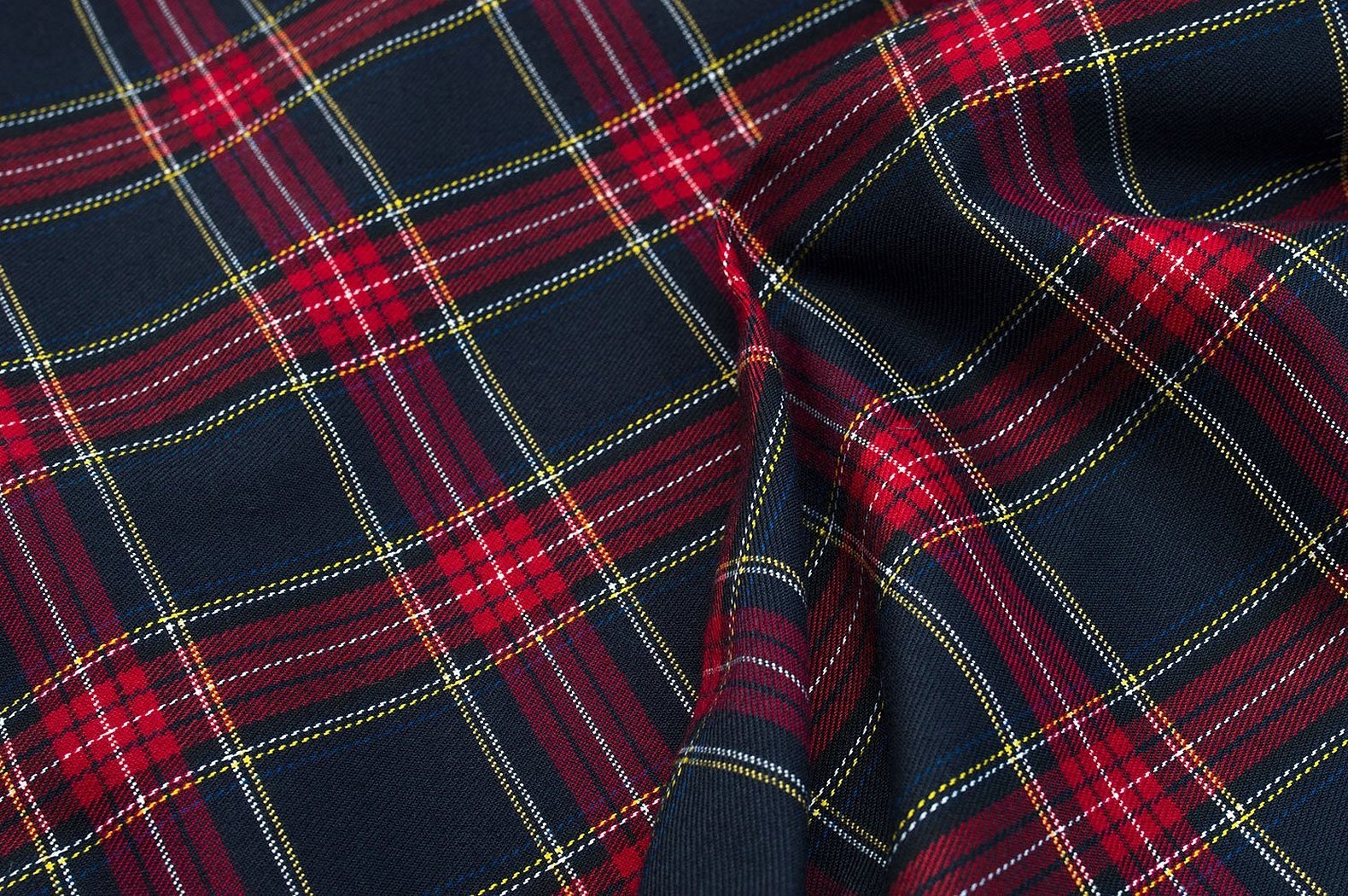
The more complex the pattern and the more shades in the tartan, the higher the status of the owner of the kilt. For example, common people wore skirts made of plain fabric, a dark checkered pattern was used for hunting suits, and the royal tartan contained 7 bright colors from natural dyes.
Since the mid-18th century, after the Jacobite rebellion, tartan was banned. Only in 1822, when the British King George IV wore a tartan kilt to meet his subjects, did the national dress return to the country. Since then, the tartan has begun to conquer the world and become popular. Thanks to the use of synthetic dyes, new color combinations of patterns are constantly being created.
All checkered patterns are registered in special tartan registers:
- Scottish Tartans World Register is a closed list. It contains 3.5 thousand unique tartan patterns that have long belonged to royal dynasties, families, cities, and educational institutions.
- The Scottish Register of Tartans contains 7,000 patterns. Anyone can create and register a new tartan pattern.
The most popular types of tartan are:
- the Caledonia tartan, which features a distinctive blue, black and green check on a red background;

- stripes of blue, green and grey muted colours on a black background distinguish the fabric "Black Watch", which was allowed to be worn by royal troops during the time when tartan was banned;

- The Nova tartan, with black, white and red stripes on a light brown background, is the signature pattern of the Burberry brand;
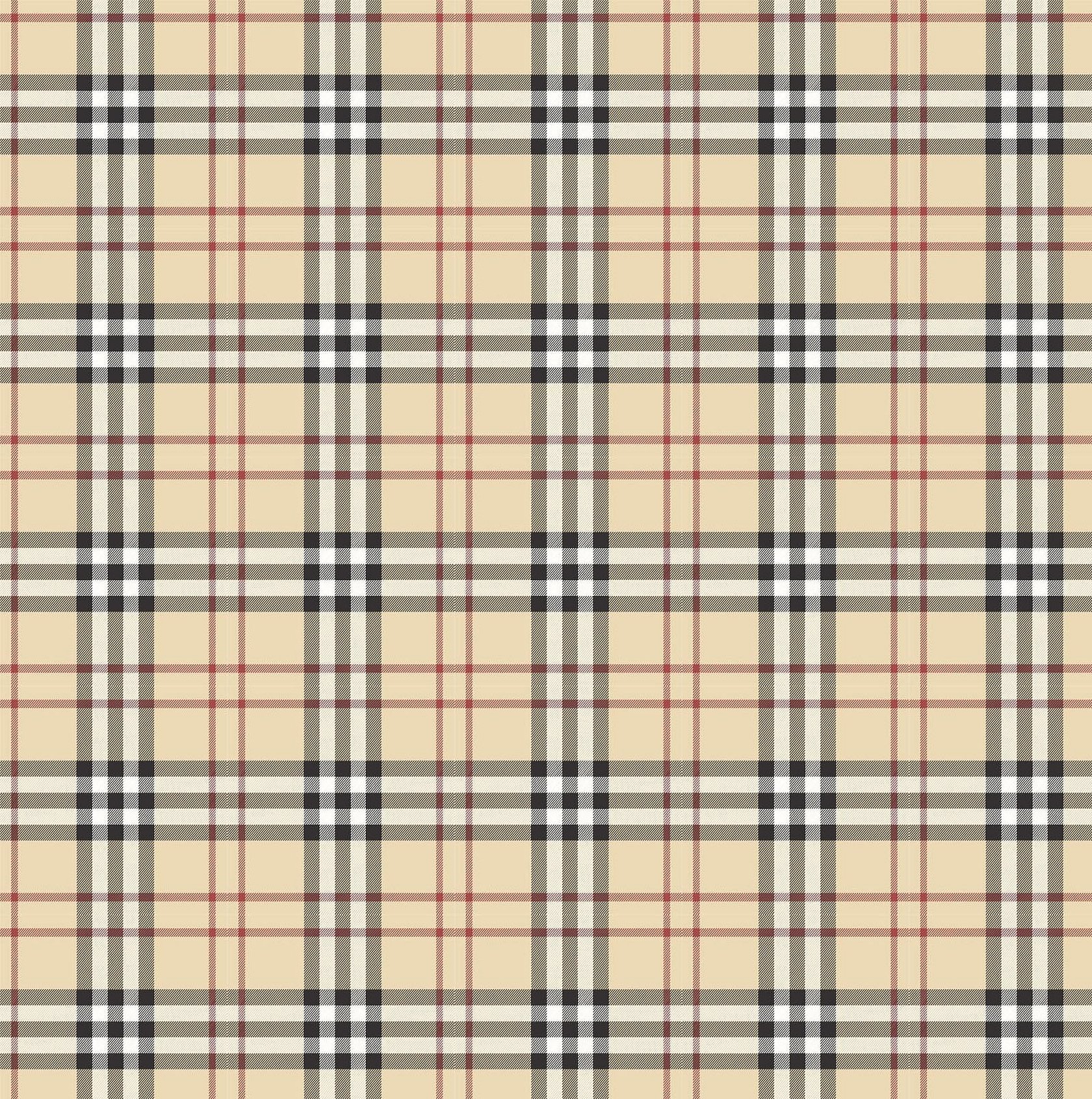
- "Glenchik" consists of black and white graphic patterns that form a cellular appearance;
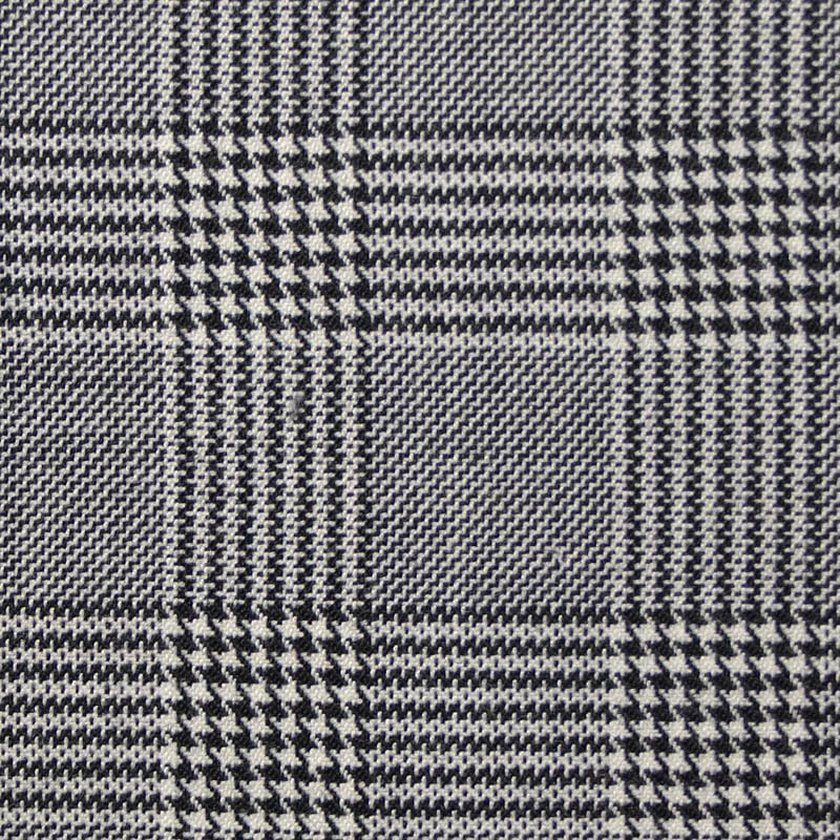
- The houndstooth pattern with diagonally elongated corners of the cells is considered a classic for creating a respectable image;
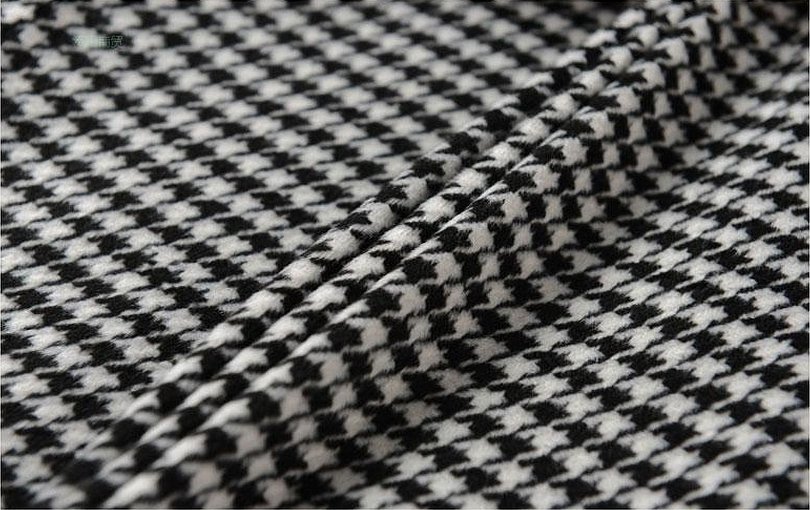
- The distinctive feature of the Vichy cell is its bright small cells.

Please note! Today, tartan is the name given to any fabric with a checkered pattern, including those obtained by covering non-woven or knitted fabric with a pattern.
Characteristics
Let's figure out what tartan is from the point of view of its production.
Despite the variety of types, any Scottish tartan is a fabric with a diagonal line, relative to which the colors are arranged symmetrically. The basis for creating a tartan is a set of colored threads arranged in a certain order. To create a diagonal, the threads are first intertwined in a straight line, and then in reverse order. The twill type of weave gives Scottish tartan strength and density. Clothes made from it do not wrinkle and are long-lasting.
Important! Classic tartan is made of wool, so it is soft, warm, and absorbs water well.

In mass production, cotton, silk, synthetic or mixed fibers are added to the tartan fabric to change its texture and characteristics. For example, adding cotton increases shrinkage during washing and the degree of wrinkling. Artificial fibers provide increased wear resistance, but reduce the hygroscopic properties.
Scope of application
The checkered pattern has become firmly established in people's lives. Tartan is successfully used by designers when creating collections:
- clothes and shoes;
- home textiles;
- upholstery of sofas, armchairs;
- wallpaper, ceramic tiles;
- interior items.
Scottish tartan in clothing
The checkered fabric has long ceased to be associated only with the national Welsh style. Tartan models have no age, gender or stylistic restrictions. Almost all items of men's, women's and children's wardrobe are sewn from tartan.
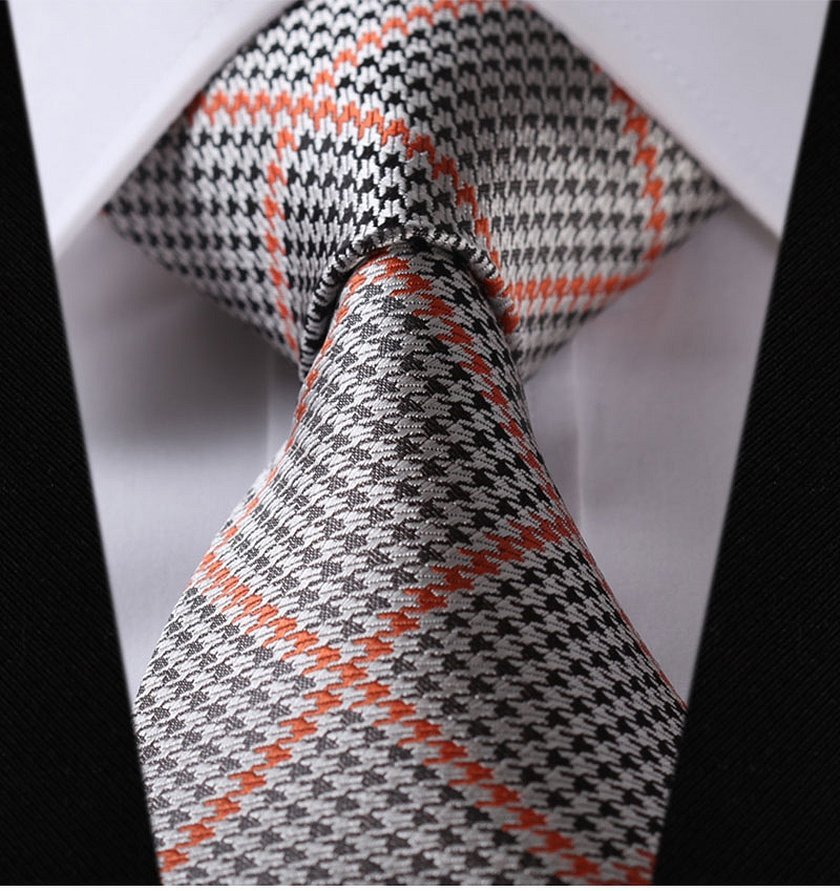
Checkered clothing goes well with plain fabrics, leather goods, jeans. A surefire way to look elegant is to match it with accessories, shoes, and bags in black.
Tartan Skirt: What to Wear It With
Every woman's wardrobe includes a plaid skirt. It comes in two main types:
- With pleats around the waist or cut with pleats from the hip line. Suitable for young girls and women with an ideal figure.
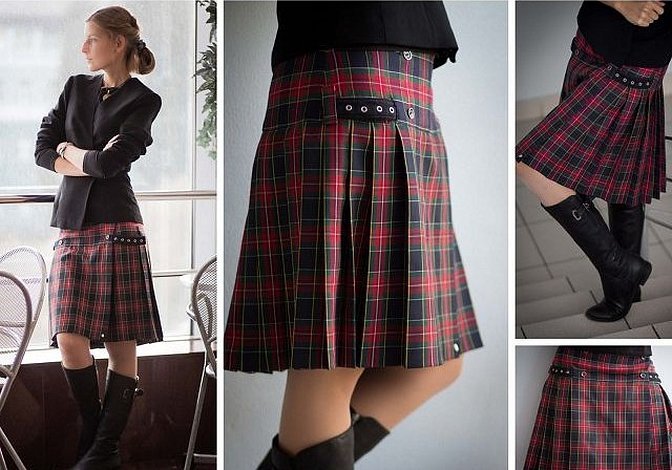
- Bias cut. The diagonal weave of the threads ensures a perfect fit for any figure.
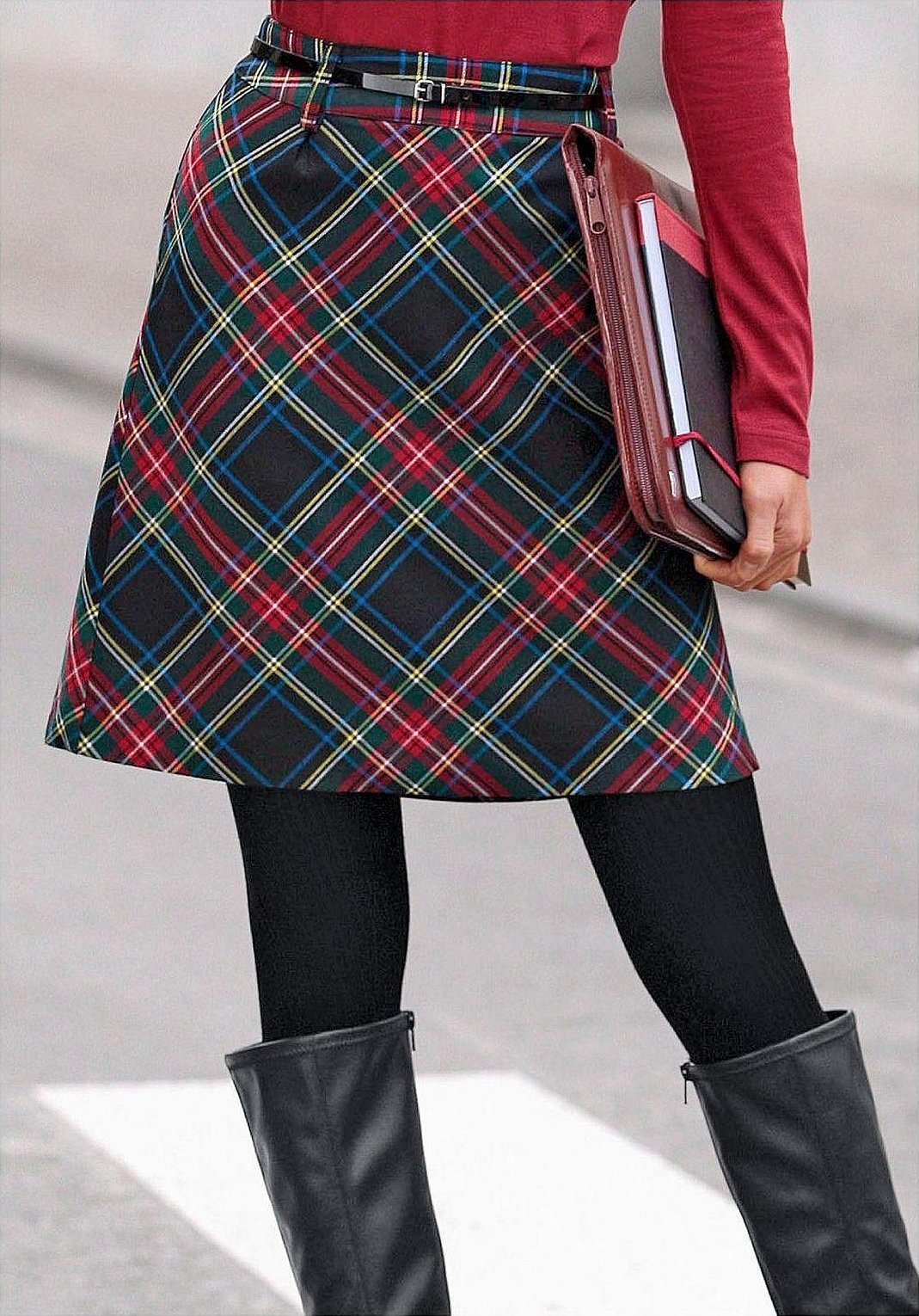
Manufacturers produce checkered skirts of different lengths: from mini to maxi. Short skirts are suitable for female students, medium length - for almost all women regardless of age and status. Long ones are appropriate for offices and walks.
Important! Tartan skirts dominate any ensemble, so other items should be selected very carefully.
These skirts are worn with blouses, turtlenecks, T-shirts, hand-knitted sweaters, denim jackets. The main condition is that the top of the silhouette is one-color.
In cold weather, thick dark tights are worn under the skirt, and a short jacket or blazer is worn over a plain blouse.
The look is completed with Jane-style shoes, elegant laced ankle boots or boots.
Plaid dresses for both feasts and the world
The check is deservedly considered a popular print. A woman will attract attention in any situation if she wears a checkered dress. The main thing is that the check pattern is appropriate to the situation and skillfully complemented by accessories.
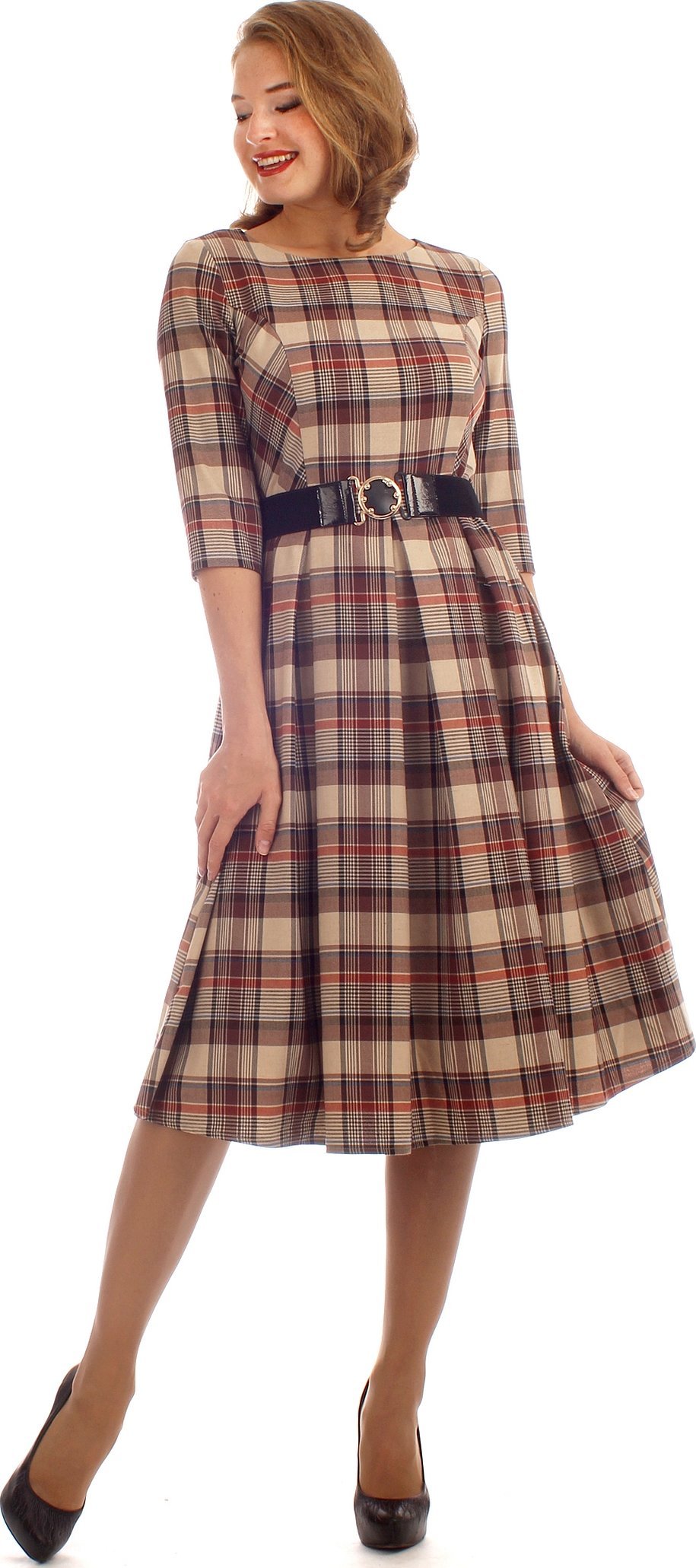
Tartan fabric looks organic in the following styles:
- in the form of a sarafan;
- case;
- loose shirt;
- strict straight;
- widened towards the bottom.
Maxi models visually slim the figure. They are sewn with a collar and long sleeves. The evening option is a dress with a diagonal check, with short sleeves or without them. Shoes, a handbag, a belt, jewelry for the outfit are selected in a single color, matching the color of the pattern.
For mid-length models, straight or A-line styles with a thin belt are suitable. Midi length is also suitable for wool sundresses and shirt dresses.
Summer sundresses with straps, cut-off waist styles, sleeveless are sewn with a mini-skirt, often fluffy.
Please note! The turn-down collar emphasizes the elegance of the outfit. Made of material in a contrasting check color, it becomes an independent bright spot.
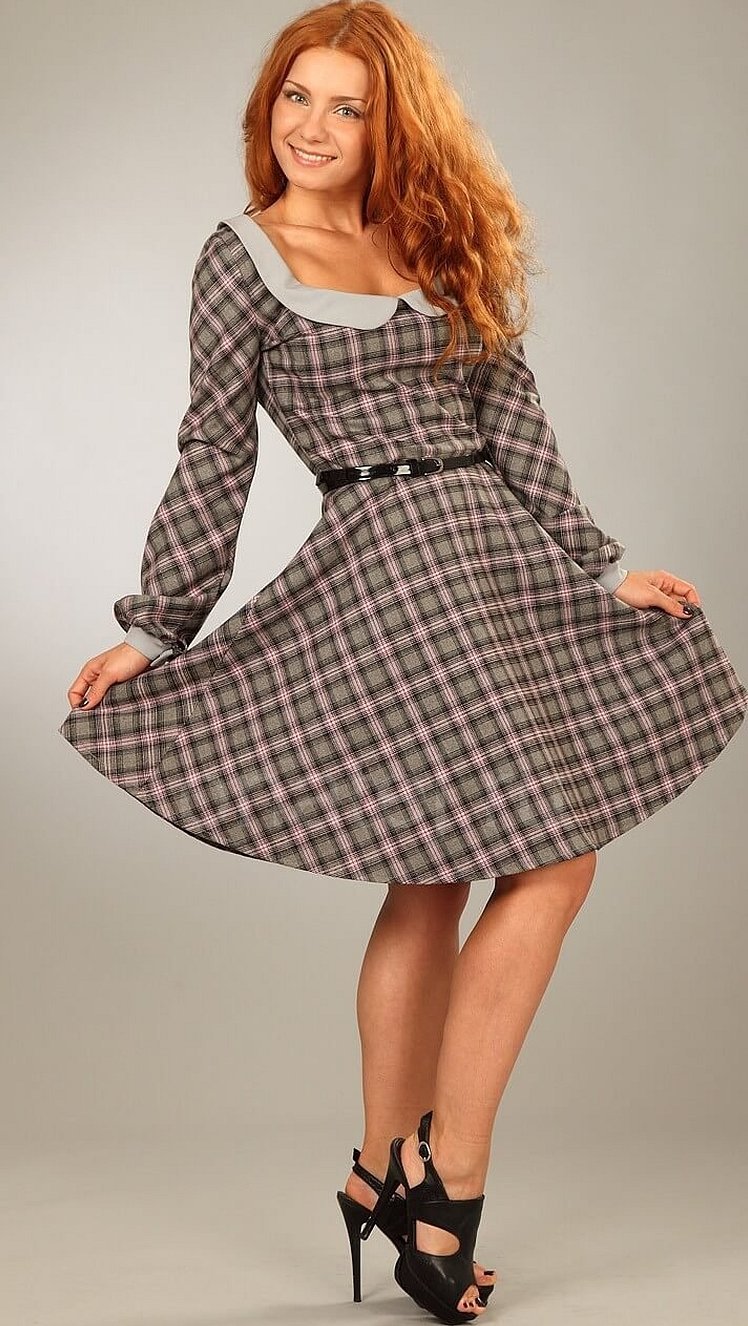
The dress's companion items should be of a single color, for example:
- woolen half coat;
- thick knit cardigan;
- poncho in a contrasting color to the checkered pattern;
- leather or denim jacket;
- light raincoat;
- stylish fur cape.
Ballet flats, ankle boots, and suede boots are suitable footwear. Over-the-knee boots are appropriate for the mini option.
Tartan as fabric for school uniforms
More and more often, checked fabrics are chosen for sewing school uniforms. Such a uniform has a strict, classic look and at the same time does not look boring. Schoolgirls wear checked skirts, dresses, sarafans, jackets. Boys wear jackets, caps, ties, bow ties in a check.
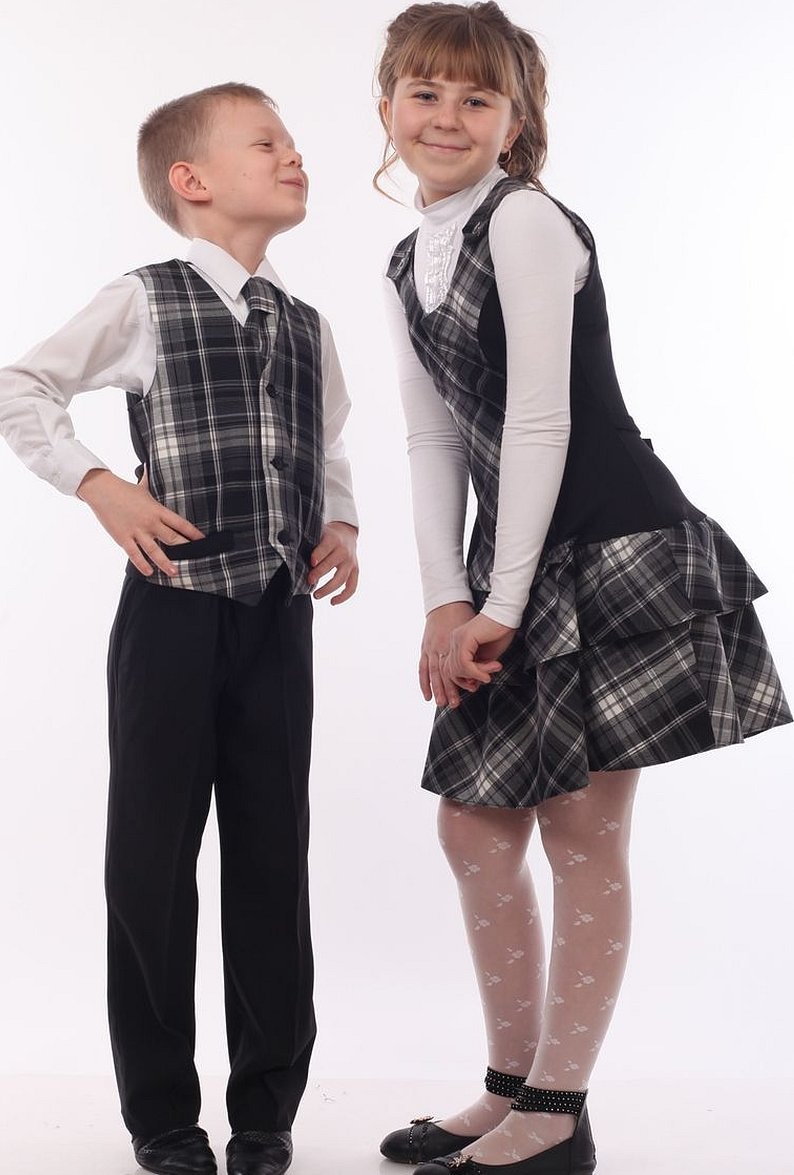
The choice of tartan for schoolchildren is related to the properties of this fabric:
- practicality, because it is not critical to get a dirty stain on multi-colored fabric;
- durability and wearability;
- combination with plain items.
What to sew from checkered fabric
Having seen tartan in a store or at an exhibition area, many people succumb to its charm and buy a piece. There are many options for updating your wardrobe by creating clothes from tartan fabric, including:
- you can sew another skirt, for example in the Boho style;
- classic-style trousers in a checkered pattern in calm colours will look elegant;
- a neckerchief or scarf will become a harmonious accent in any suit, even a man’s;
- an office suit and a sundress will never be superfluous;
- it's easy to make a vest for a man;
- Identical models for mother and daughter look stylish.
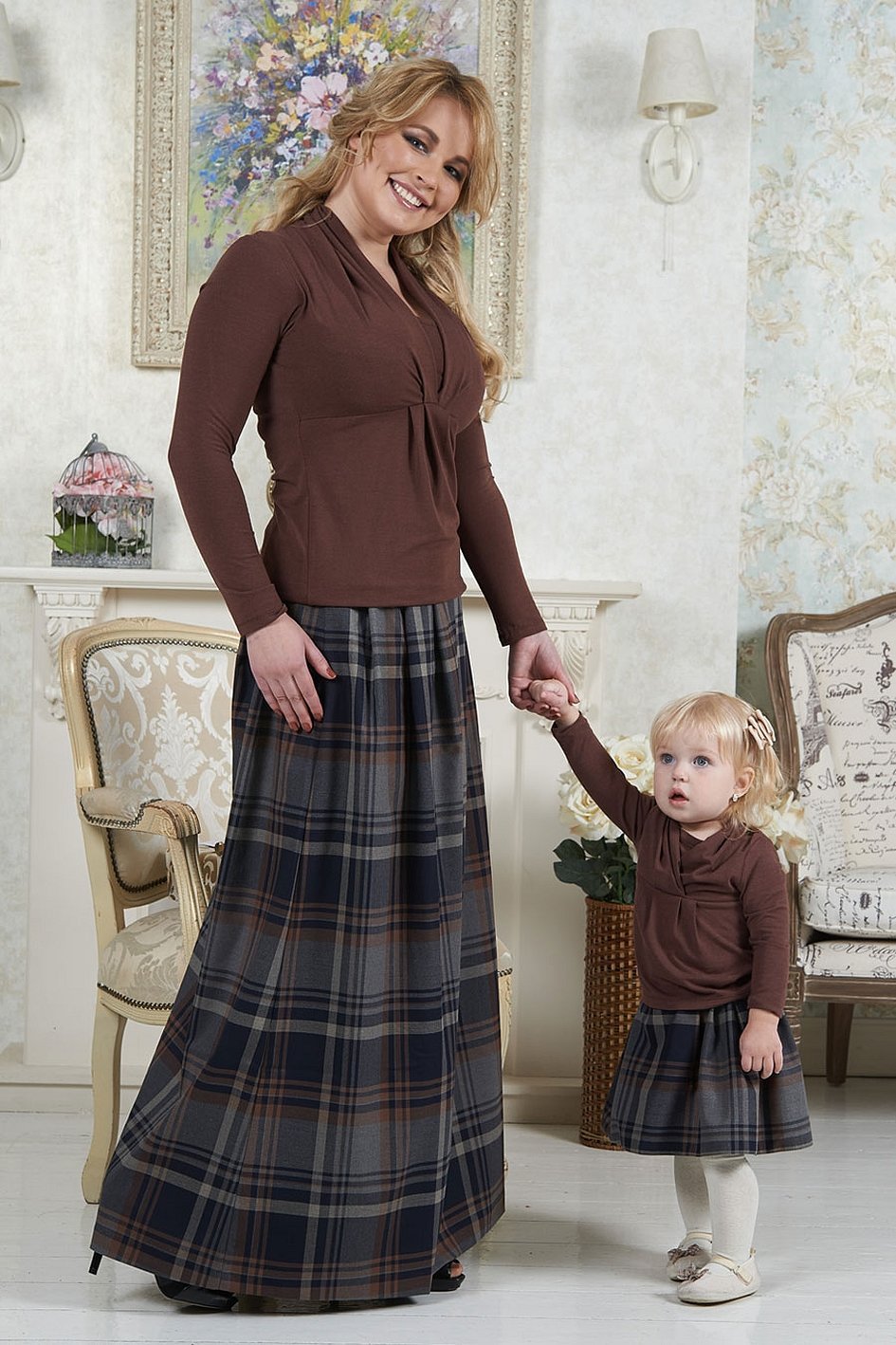
Important! You should not wear more than 2 items with a checkered pattern and combine tartans with different patterns. Such clothes look tasteless.
People who want to keep up with fashion choose things with a checkered pattern. And this is not accidental, because tartan is a solid and noble fabric that is timeless.

